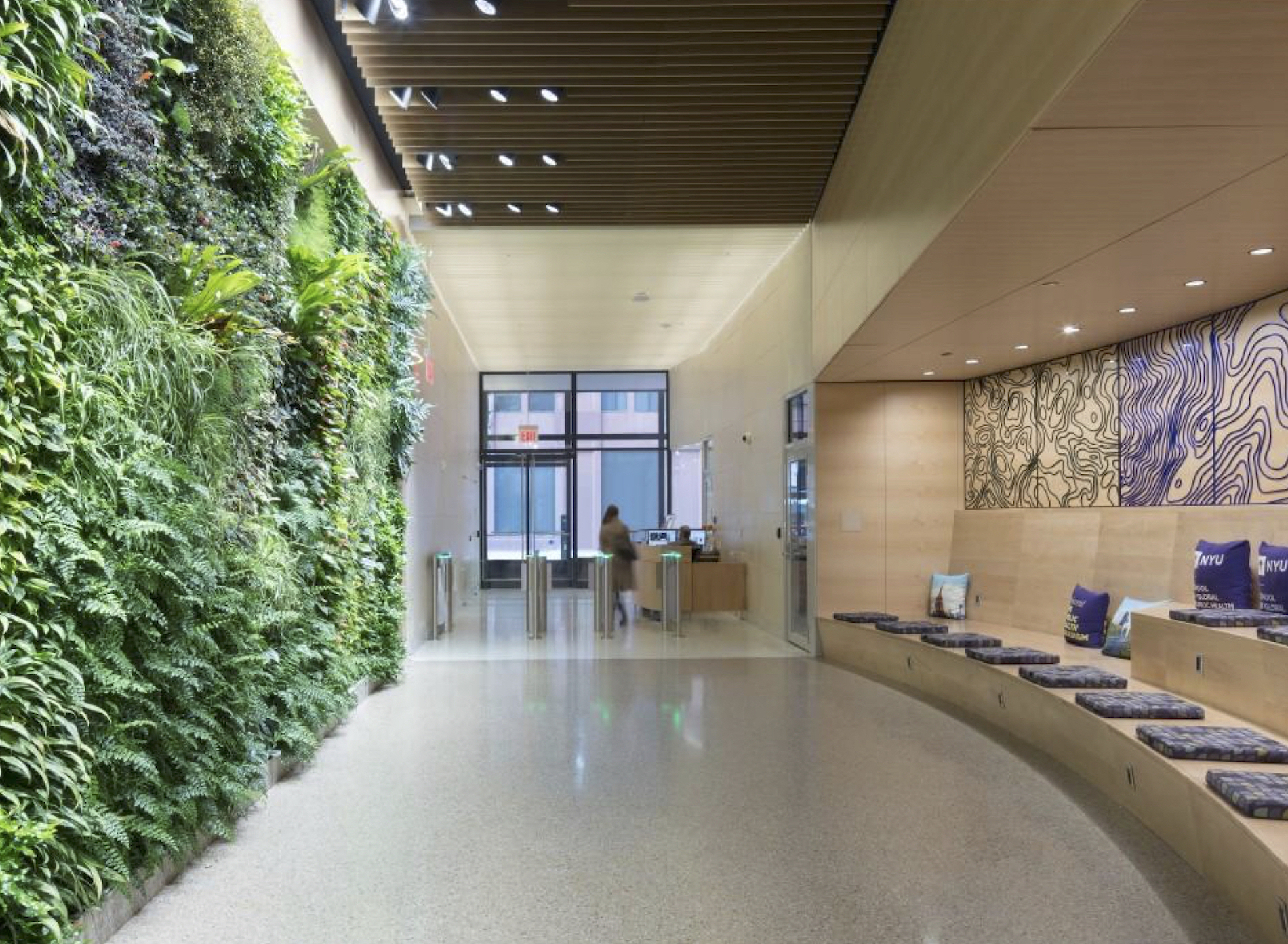Perkins Eastman and Kliment Halsband Architects are pleased to announce their merger, which will combine the formidable talents, experience, and skills of both legacy firms. With Perkins Eastman celebrating its 40th anniversary and Kliment Halsband celebrating its 50th, this merger promises to create powerful synergies.
Perkins Eastman, the seventh largest architecture and design firm in the world with more than 1,100 employees, has worked on projects on five continents in 60 countries. Its portfolio reflects expertise in multiple practice areas with strengths in healthcare, senior living, large-scale mixed-use, K-12, higher education, hospitality, and workplace design as well as planning, urban design, and strategic consulting. Kliment Halsband Architects is known for designing award-winning new buildings, renovations, and adaptive reuse projects for educational, cultural, and civic institutions. The firm’s reputation for a sensitive, tailored approach for mission-focused clients is long established.
The merger provides a framework for combining Perkins Eastman’s expansive scale, deep reserve of design, and diverse portfolio with Kliment Halsband Architects’ renowned engagement in institutional design, its reputation for pragmatic innovation, and its leadership position within the industry. Both firms have highly collaborative working styles, prioritize client service, and are committed to educating and inspiring the next generation of professionals.
“Both firms believe in the power of design to improve people’s lives, and we’re looking forward to providing that benefit to a wider range of institutions,” says Mary-Jean Eastman, FAIA, co-founder and vice chair of Perkins Eastman.
Frances Halsband, FAIA, a founding partner of Kliment Halsband, adds, “We see things the same way, but we work in different ways to bring something new to the table. When we work together, we accomplish more than when we work individually.” Kliment Halsband will be known as “Kliment Halsband Architects—A Perkins Eastman Studio,” joining Perkins Eastman’s leaders in the K-12 and Colleges and Universities practices. The firms’ New York studios are co-located at 115 Fifth Avenue, New York, NY.
ABOUT PERKINS EASTMAN
Perkins Eastman is a global design firm founded on the belief that design can have a direct and positive impact on people’s lives. The firm’s award-winning practice draws on its 1,100+ professionals networked across 24 studios worldwide. By keeping the user’s needs foremost in the design process, the firm enhances the human experience across the spectrum of the built environment. For more information, visit www.perkinseastman.com.
ABOUT KLIMENT HALSBAND ARCHITECTS—A PERKINS EASTMAN STUDIO
Kliment Halsband Architects, founded by Robert M. Kliment and Frances Halsband in New York City in 1972, is a diverse group of architects committed to the idea that good architecture imparts dignity to organizational mission and individual endeavor. The firm transforms buildings and sites with a measured approach that engages the past and welcomes the future. KHA advocates for sustainability and accessibility for all, but values most a project’s enduring usefulness: beauty, intelligibility to the people who use it, and the ability to adapt to change. The firm has received the AIA Firm Award, the AIA New York City Medal of Honor, and more than 150 awards for design excellence. For more information, visit www.kliment-halsband.com.
Related Stories
Laboratories | Aug 3, 2017
Today’s university lab building by the numbers
A three-month study of science facilities conducted by Shepley Bulfinch reveals key findings related to space allocation, size, and cost.
Lighting | Aug 2, 2017
Dynamic white lighting mimics daylighting
By varying an LED luminaire’s color temperature, it is possible to mimic daylighting, to some extent, and the natural circadian rhythms that accompany it, writes DLR Group’s Sean Avery.
Healthcare Facilities | Aug 2, 2017
8 healthcare design lessons from shadowing a nurse
From the surprising number of “hunting and gathering” trips to the need for quiet spaces for phone calls, interior designer Carolyn Fleetwood Blake shares her takeaways from a day shadowing a nurse.
Sponsored | Architects | Aug 2, 2017
Are visual ergonomics the new key to project delivery?
An Australian Home Theater Company is out to prove that the easier you can see it, the easier you can sell it.
Multifamily Housing | Jul 27, 2017
Apartment market index: Business conditions soften, but still solid
Despite some softness at the high end of the apartment market, demand for apartments will continue to be substantial for years to come, according to the National Multifamily Housing Council.
Multifamily Housing | Jul 27, 2017
Game rooms and game simulators popular amenities in multifamily developments
The number of developments providing space for physical therapy was somewhat surprising, according to a new survey.
Building Enclosure Systems | Jul 26, 2017
Balcony and roof railings and the code: Maintain, repair, or replace? [AIA course]
Lacking familiarity with current requirements, some owners or managers complete a roof or balcony rehabilitation, only to learn after the fact that they need to tear noncompliant railings out of their new roof or terrace and install new ones.
Office Buildings | Jul 26, 2017
Meeting space leads to innovation
PDR Principal Larry Lander explains how to design for workplaces where four generations are working together.
Architects | Jul 25, 2017
AIA 2030 Commitment expands beyond 400 architecture firms
The 2016 Progress Report is now available.
Multifamily Housing | Jul 19, 2017
Student housing trends: The transformation of co-living in college
The Student Hotel is representative of a new model for delivering housing solutions for students globally.

















